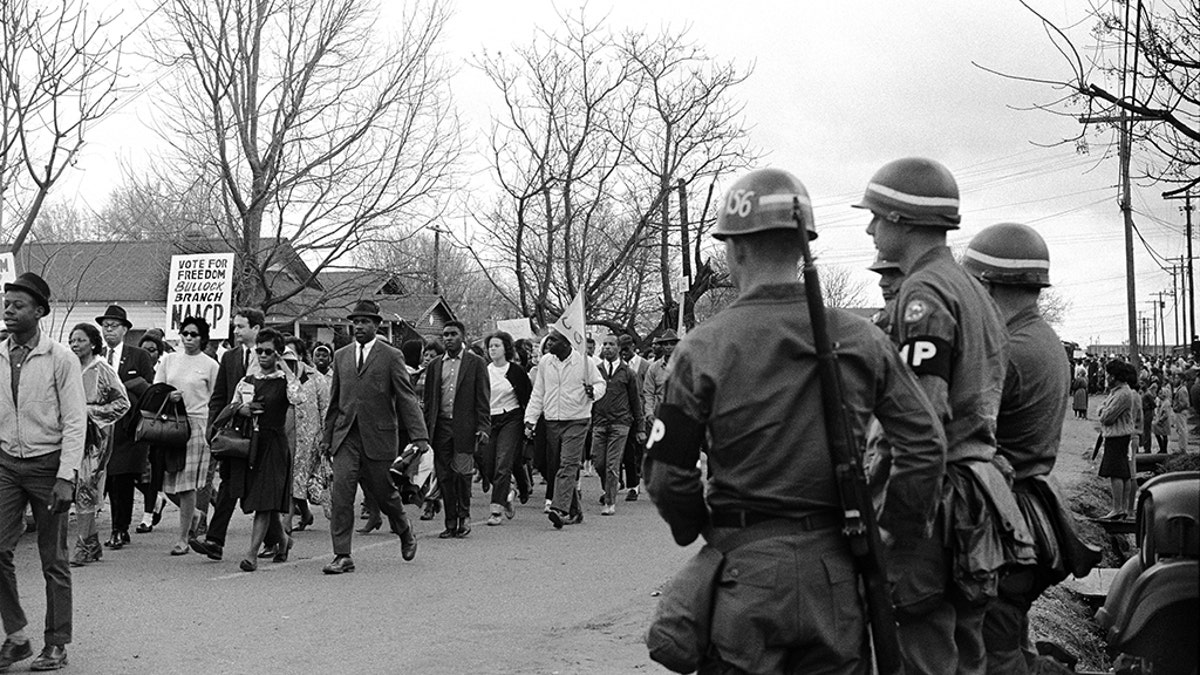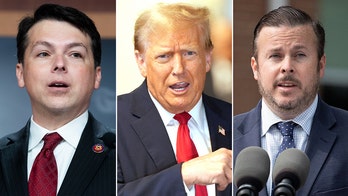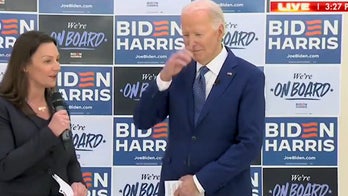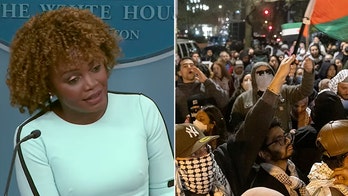The Trump administration is facing intense criticism for its decision to send federal law enforcement to Portland in an effort to protect federal property from riots that have gone on for more than 50 days -- but it is the latest in a history of presidents sending federal muscle to cities facing unrest, albeit with circumstances very different from today.
The Department of Homeland Security (DHS) sent Federal Protective Service (FPS) and Customs and Border Protection (CBP) law enforcement to Portland, where protesters have been rioting and attacking federal property -- particularly the Hatfield Courthouse. The Justice Department’s U.S. Marshals Service is also present.
Another Justice Department program, meanwhile, is being expanded to address violence in other cities.
Opponents of the response, including House Democrats and Portland Mayor Ted Wheeler, have accused DHS of fueling the existing violence in the city and “unidentified” officers of arresting protesters -- a claim DHS denies.
House Speaker Nancy Pelosi tweeted, “Unidentified stormtroopers. Unmarked cars. Kidnapping protesters and causing severe injuries in response to graffiti.”
While the circumstances are unique today, the use of federal government intervention in cities facing riots and unrest is not unprecedented.
The Trump administration's response to Portland differs from past responses in two significant aspects. One is governors and mayors had often (but not always) invited the federal government's help, while officials in Portland have called for them to leave. The other is that Trump has sent DHS law enforcement, rather than the troops often sent in by past presidents (before DHS existed).
Presidents can deploy troops to cities under the Insurrection Act of 1807, but normally at the request of a state legislature or governor, and the circumstances in which a president does not need permission is debated. Trump last month controversially threatened to use the Insurrection Act to send the military to cities that do not control rioting.
But for Portland, the White House has cited 40 U.S. Code 1315, which gives DHS the ability to deputize officers in any department or agency “in connection with the protection of property owned or occupied by the federal government and persons on that property.” So the White House is using law enforcement specifically for the protection of property, rather than to settle broader unrest in Portland.
Here is how that compares to past presidential uses of force in cities hit by unrest.
President George H.W. Bush
In 1992, California Gov. Pete Wilson requested federal help from President Bush in response to the Los Angeles riots that engulfed the city following the acquittal of officers in the Rodney King beating. Bush responded by sending thousands of Army and Marine troops.
As part of his request, Wilson said that the California National Guard was unable to stop the violence, which raged through Los Angeles County in May and April.
President Lyndon Johnson
In 1965, President Johnson famously used federal power to put the Alabama National Guard under control of the federal government in order to protect the civil rights march from Selma to Montgomery. The march was protected by 2,000 Army soldiers, 1,900 federalized guard members as well as federal marshals and FBI agents.
Johnson’s decision was in response to Alabama Gov. George Wallace's statement that he would not protect the protesters from violence from those who opposed them after protesters had been attacked by state and local police days earlier.

Federal Army troops guard civil rights marchers striding along route 80, the Jefferson Davis Highway during the Selma to Montgomery Civil Rights March on March 25, 1965 in Montgomery, Alabama. (Photo by Stephen F. Somerstein/Getty Images) (Getty)
US ATTORNEY CALLS FOR PROBE INTO FEDERAL CRACKDOWN ON PORTLAND RIOTS
Two years later, Johnson sent thousands of Army troops and National Guardsmen to Detroit after riots that left 43 people dead and millions of dollars in property damage. He had received a request from Michigan Gov. George Romney.
He later sent the Army into Chicago, with the approval of Mayor Richard Daley, to put an end to violence that broke out after the death of Martin Luther King Jr. in 1968.
President John Kennedy
Kennedy, like his successor LBJ, federalized the Alabama National Guard after Wallace promised to stop black students from enrolling at the University of Alabama.
A year earlier, Kennedy mobilized the National Guard and sent federal police, National Guardsmen and federal marshals to Mississippi after James Meredith, a Black Air Force veteran, was denied entrance to the University of Mississippi, and riots broke out on campus. There had been no request by the Mississippi governor, who strongly opposed Meredith enrolling.
President Dwight Eisenhower
Eisenhower had deployed elements of the 101st Airborne Division to Little Rock, Ark., in 1957 to maintain order and to enforce school desegregation that had been ordered by the Supreme Court. He also federalized the entire state National Guard.
CLICK HERE TO GET THE FOX NEWS APP
President Franklin Delano Roosevelt
FDR sent thousands of troops into Detroit in 1943 at the request of the mayor and governor, imposing a curfew, after days of deadly race riots. According to the Detroit Historical Society, no White people were killed by police, while 17 Black people were killed.





